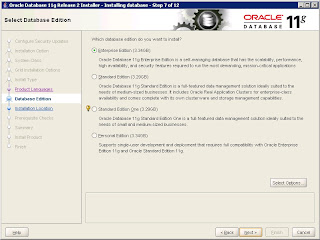This is part 1 in a multi-part blog post, in this first post I'll describe the process of laying the groundwork for what will eventually be a working vCloud Director / vShield Manager deployment in my VMWare VSphere lab.
Part 2 will be forthcoming
- Database Server - Guide for installing Oracle 11g or choose Microsoft SQL Server
- vShield Manager, SSL Certs, CENTOS and vCloud Director - Deploy and configure the vShield Manager virtual appliance. Generate SSL certificates necessary when installing vCloud Director. Create a Linux operating system to host vCloud Director. Install and configure vCloud Director.
The first thing I wanted to know before I decided to install vCD was
What will vCD do to my existing infrastructure? You will go through a process where you surrender some of the resources of the infrastructure to the vCD at which point it will take over those resources and manage them but it will not touch any of the resources that you have left aside.
Required components for this installation.
Database Server - I decided to document the process of installing Oracle, if you want to use Microsoft SQL Server you can skip to part 2. I chose to use Oracle 11g, created an account on the Oracle website and downloaded the database sofware. I'll be installing the database software on an existing Windows 2003 Server R2 x64 bit virtual machine that I currently use to run my VCenter Server on. Oracle Download
vCloud Director - VMware vCloud Director enables customers to build secure, multitenant hybrid clouds by pooling infrastructure resources into virtual datacenters. and enabling those resources to be consumed by users on-demand. vCloud Director pools datacenter resources, including compute, storage and network, along with their relevant policies into virtual data centers. Fully encapsulated multitier virtual machine services are delivered as vApps, using the Open Virtualization Format (OVF). End users and their associated policies are captured in organizations. With programmatic and policy-based pooling of infrastructure, users and services, VMware vCloud Director enforces policy intelligently and creates unprecedented flexibility and portability. vCloud Download
vShield Manager - Included with all vShield products, vShield Manager provides a central point of control for managing, deploying, reporting, logging and integrating vShield as well as third-party security services. Working in conjunction with vCenter Server, vShield Manager enables role based access control and separation of duties as part of a unified framework for managing virtualization security. vShield Download
CENTOS - Linux operating system to install vCloud Director on - CENTOS Download
If you are planning on using Microsoft SQL Server skip to part 2.
Oracle installation - After downloading the two files that make up the Oracle 11g installation for Windows x64, extract the zip files and run the installation.
Follow the installation wizard and configure the install according to your requirements, the screenshots below show the configuration that I chose for my lab.
Note: The global database name used in the field below will be used to connect to the Oracle database after the installation is complete
After the Oracle Installation is complete, launch a command prompt and type:
sqlplus system/oracle@localhost/[Global Database Name]
example: sqlplus system/oracle@localhost/orcl.csharpsnippets.local
From the SQL> prompt type: create user cloud identified by oracle;
A message should appear: User created.
Now type the following command: grant "RESOURCE", "DBA", "CONNECT" to orcl;
You should see the message: Grant succeeded.
Verify the Oracle install and listener
This completes part 1 and the Oracle Installation.






















No comments:
Post a Comment